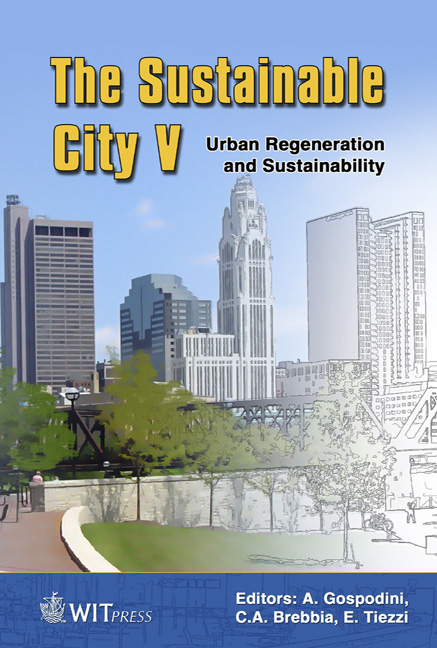City Architecture From Traditional Past – A Malaysian Case
Price
Free (open access)
Transaction
Volume
117
Pages
8
Page Range
275 - 282
Published
2008
Size
2,332 kb
Paper DOI
10.2495/SC080261
Copyright
WIT Press
Author(s)
A. B. Sulaiman & S. Shamsuddin
Abstract
Traditional city-forms that still exist today reflect a civilization from which a designer for future sustainable settlements could learn – by looking at its strengths and weaknesses. The traditional form in Malaysia produces city architecture that is still vibrant today. It was formed by modifying and adapting existing situations to meet the needs, as well as the aspirations, of the people that have resulted in a unique and distinctive urban ensemble. Through time the city architecture represents the broader context of the society. This is in contrast to the modern building and urban architecture that lacks environmental, cultural, psychological and behavioural responses. The current practices (Malaysia) through simplistic application of planning, social, economic and environmental theories, produces towns and cities that lack identity. The human scale and sense of unity of the traditional settlements creates an urban composition that is unique and readily recognizable, and assist in creating a clear sense of place. There is a rich discourse between the public realm, with individual territorial needs in a complex and compact existence, which create a townscape character that displays a rich and harmonious ethnic composition that could inform designer in creating future places. The facilities they provide also shows their response to the individual and public needs of a sustainable and liveable city. Keywords: city architecture, liveable city, sustainable urban design. 1 Introduction Many different cities have evolved through time, responding to the needs of man, such as those associated with culture, commerce, industry, power and others. But most of all, cities are places where people live, where it is possible to fulfill ones desires, aspirations and needs. Thus a city should be a place for work,
Keywords
city architecture, liveable city, sustainable urban design.





